It’s as remote as it gets in France, but this restaurant is worth the trip
How two Australians created an award-winning and game-changing agricultural dining destination in the French countryside.
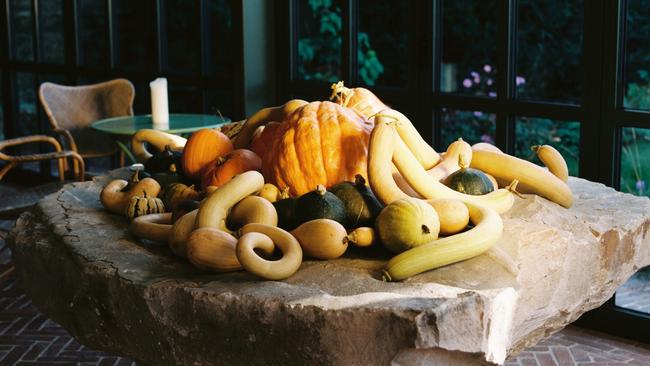
It’s a typical February day in France on my visit to Le Doyenné. Wet, sullen, and there’s a nationwide rail strike. The restaurant is about an hour and a half from Paris, in the sleepy town of Saint-Vrain. It’s a relatively unassuming locale, a stoic place that looks like any other small French borough jostling to get closer to the big city. But then, not all of these places have a historic château that has been converted into a culinary oasis.
I’m here to visit James Edward Henry. He’s the co-owner and head chef, and alongside fellow Australian chef Shaun Kelly, who manages the garden side of things, they have created something quite magical.
What began in 2017 has grown into Henry’s most ambitious project ever. Despite owning and operating a thriving restaurant in Paris before, the metropolitan experience pales in comparison with his goals for Le Doyenné. Here, Henry and Kelly have reclaimed a palatial estate, and with help from the original owners the Mortemart family, converted it into a destination restaurant and accommodation. There’s even a gift shop but instead of souvenir T-shirts and keyrings, it’s all rare vinegars, single-batch olive oils, and bottles of wine from tiny estates across France.

The centrepiece of the great restoration is the barn, which now serves as the restaurant’s sprawling dining room and open kitchen. Despite being heavily decorated with culinary tchotchkes such as duck-shaped decanters and decorative bread baskets, the space feels airy inside. The interiors were designed by Ciguë, a Parisian architectural firm that has also created spaces for Australian skincare brand Aesop and Parisian fashion label Isabel Marant in the city.
Before Henry and Kelly took over the estate, it was a drive-through safari park. Wild animals roamed, and in a sense, they still do but instead of tigers, it’s pigs, which will one day make it onto the diners’ plates.
Henry is by no means coming into this green. Back home in Australia he worked in Brisbane, before heading to Byron Bay institution Raes on Wategos. Then it was a stint in Melbourne, at Cumulus Inc., where he met Kelly, before following a great pilgrimage of Aussie chefs overseas, and eventually finding himself in Paris. He worked at a host of the city’s dining hot spots, including Spring and Au Passage, before opening his own restaurant Bones, which was a monumental success.
Henry shuttered Bones in 2015, opting to shift his career in a different direction. Yet despite the bucolic scene of Le Doyenné, the pace hasn’t changed for him at all. “I don’t really feel it’s slowing down, I guess that’s important to emphasise,” he says. The chef has just finished the first of two Sunday sittings, and we’re talking by the fire in an antechamber off the main dining room. “I guess the idea of a ‘country change’ can be seen as a step towards slowing down, or retirement,” Henry says. “But in terms of any project I’ve undertaken, it’s the most ambitious, it’s taking the most energy and attention. It’s an immense undertaking.”
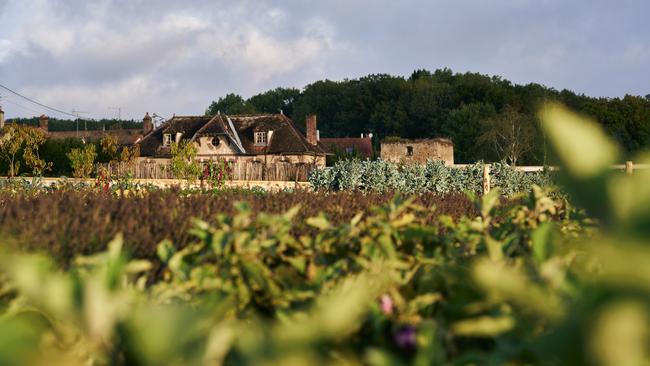
Despite the challenge it has presented, the chef knew this space was perfect on his first visit.
“I felt like we were on the frontier of an agricultural area, but also the suburbs – this intersection of both that I didn’t expect to find behind the gate. This oasis of calm and this ecosystem. It was exciting and enticing.”
That said, Henry was not without his doubts when they opened. Despite building a name for himself in the city, this was different. People needed to travel here. But the blueprint did exist. “There are enough examples of successful restaurants in really remote locations around the world,” he says, “If you do it well enough, people will come.” To define “it”, Henry points to Fäviken, a restaurant in a remote corner of Sweden that served an experimental Nordic-inspired menu. It topped the bucket lists of Michelin-starred chefs and diners the world over until it closed in 2019. Fäviken had “it”.
“I think if you build something, and invest in it, and if people can resonate or find something within it that they like – wherever you are – distance isn’t going to be a determining factor,” Henry says.
He also cites Asador Etxebarri, No.2 on The World’s 50 Best Restaurant list of 2024, located in the Spanish Basque countryside. These restaurants offer something more than food; serving a message that goes beyond just what’s on the plate in front of you. They tell a story.
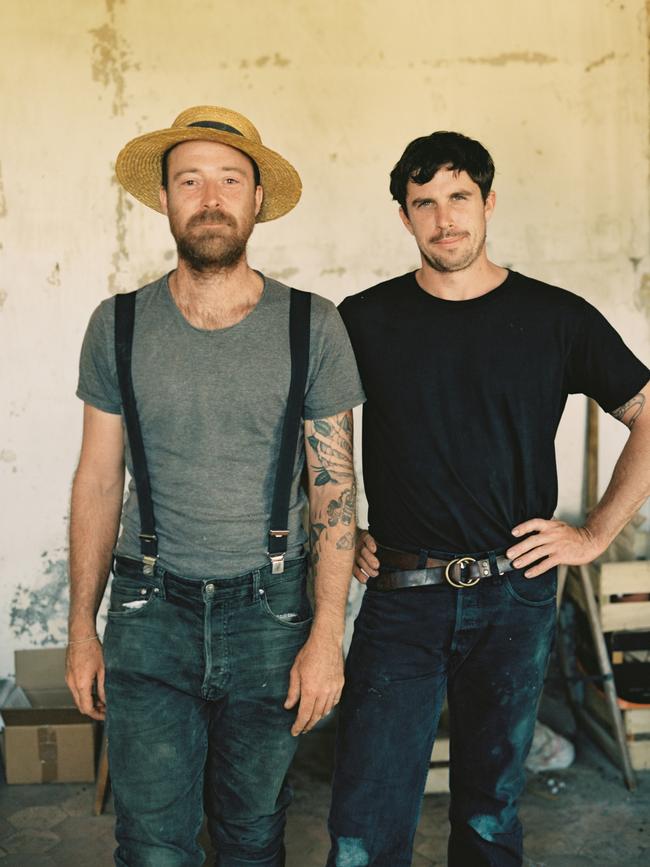
For Henry, his “it” is in the execution of this ethos. “I think people overemphasise the importance of location,” he says. “I think ‘the work’ is the most important thing you can do.”
And there’s certainly a lot of work at Le Doyenné. It began with selling the vegetables, tended to by Kelly and retailed to fine-dining establishments in Paris including, among others, the buzzed-about Septime.
“It was important to bring credibility to the agricultural side of the project,” he says. “I don’t think we were worried about people’s opinions on whether we could cook or not.” The pair voraciously sought earnest feedback from their peers on the quality of the produce. It was something Henry found invaluable.
He’s now planted fruit trees, literally putting down roots at Le Doyenné. “Once you plant the fruit tree, that’s a commitment to something much longer. Embarking on something agricultural gives you a scale of time.”
The potager now forms the heart of the restaurant’s seasonal menu. It is open for two sittings on Thursdays and Fridays, three on Saturdays and Sundays. Since our meeting, Henry has made a brief return home to cook at a Tasting Australia event in Adelaide, but it was in and out and he quickly returned to life in France.
“I’m comfortable here,” he admits. “I understand what people want, the relationship to seasons, the wine I want to serve. It’s here. I feel good in France.” He’s also scored himself a ranking on the 2024 World’s 50 Best Restaurants, taking out the No. 70 spot on the extended list. As far as awards go, Le Doyenné has also received a Green Michelin Star, recognising the restaurant’s contribution to sustainability in gastronomy. These new markers of success, coupled with the upcoming Paris Olympics, mean things are only going to get busier.
“It’s business as usual,” Henry stresses. But he also teases a slight tweak to his offering during the summer months. His approach responds to a shift in the way diners now look at food. Whereas once it was which restaurant could fly in the rarest crab from the depths of the Barents Sea – and charge you for it – the trend is now the opposite. People want to travel, but prefer that their food doesn’t. “If money is the only thing that determines whether something is attractive,” he ponders. “Is that true luxury? Or is luxury being able to experience something in only one moment in time and place?
“When I first arrived in France,” he continues, “I’d be like, ‘Wow, the seasons shift quickly’, there is not a lot of time to understand how to cook asparagus or peas, because it’s here and then it goes. It creates this desire. I look forward to my first strawberry of the year and I cherish them while they are there.”
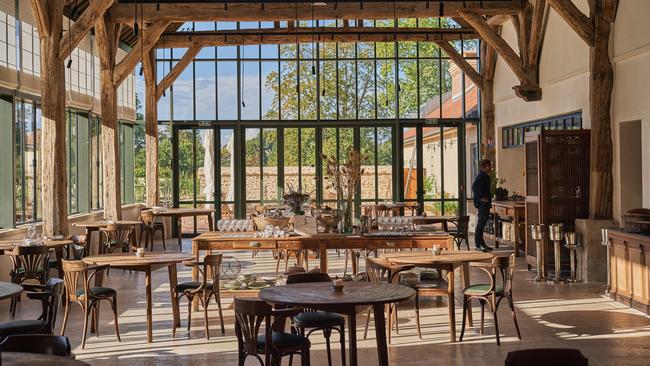
Just about everything that Le Doyenné plates up during the eight-course meal is sourced from a paddock you can see from your table, be it the translucent charcuterie du Doyenné (made with pigs from the farm) to the tarte fine au céleri (celery tart) and the glace aux agrumes et miel de fleur de coriandre (citrus ice cream with coriander flower honey).
The lush grounds that surround the dining room play host to a greenhouse, a vegetable garden and animal enclosures. The experience is warm and hospitable, and that’s exactly Henry’s intention. The chef often serves diners himself, his Australian accent entwined with a slight hint of French. And that’s the thing that arguably defines the experience of Le Doyenné: the Australianness of it. There’s none of the distance that you associate with Parisian hospitality. Instead, it’s attentive without being overbearing; a case of French respectability meeting the inherent warmth of Australia.
Henry’s pride in his produce shines through in every course. Servings are generous and hearty, the plates look rummaged from antique sales, and the wine list is natural leaning. It’s food to be enjoyed, over, and over. “I love looking around the dining room,” says the chef, gesturing back into the main area. “It’s a really diverse clientele; internationals, older generations from Paris – both Left and Right Bank – people from this area. It’s nice that you have this meld of people from all backgrounds, coming for one thing.”
Each dish is a chapter that captures, page by page, the tale Henry and Kelly are telling through Le Doyenné. When I dined, the table behind me was an elderly couple celebrating an 80th birthday. The table in front of me, I’m told, hosted Elvis star Austin Butler and his model partner Kaia Gerber the week before. But today it’s a Parisian chocolatier with his wife and kids. There’s no telling who will walk through the door for a booking on any given week. But they are coming.
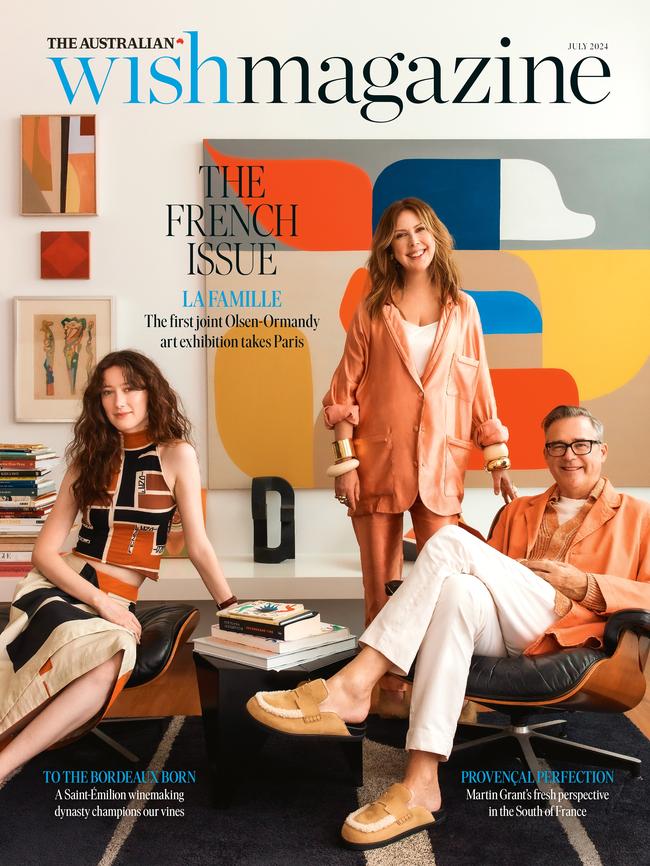
This story is from the July issue of WISH.




To join the conversation, please log in. Don't have an account? Register
Join the conversation, you are commenting as Logout